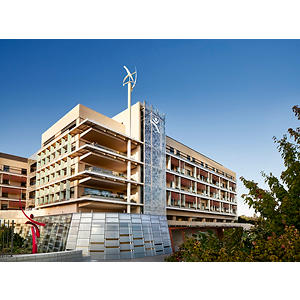Elisabeth Martin, MD
Surgical Director, Pulmonary Artery Reconstruction | Surgical Director, Bloodless Cardiac Surgery | Surgical Director, Pediatric Lung and Heart-Lung Transplant | Surgical Co-Director, Adult Congenital Heart Disease Program | Surgical Director, Center for Advanced Lung (CEAL) Therapies | Clinical Assistant Professor
Cardiac Surgery
- “Children are incredibly resilient. It is extremely rewarding to watch them get over bumps in their young lives and grow into healthy, strong young adults.”
My Approach
As a highly specialized pediatric cardiac surgeon, I’m honored to carry forward world-renowned surgical techniques pioneered here at Stanford Medicine Children’s Health. These transformative procedures allow us to greatly improve the lives of children with complex congenital heart conditions and pulmonary artery anomalies, caring for them through adulthood. I’m humbled to give children a chance at a healthy, active life.
I perform surgery on children with all types of congenital heart conditions from simple to complex, at any age. I find it especially satisfying to care for children as they grow, monitoring changes in their congenital heart disease well into adulthood. I find it absolutely fascinating to be a part of each persons unique experience with congenital heart disease and see the difference that surgery makes in helping them live full lives. How children develop through the years after surgery informs current research and surgical approaches, which makes us better able to care for all children and adults with congenital heart disease.
Locations

725 Welch Road, Ste 120
Palo Alto, CA 94304
Phone : (650) 497-8000
Fax : (650) 725-0707
Conditions
Alagille Syndrome
Congenital Heart Disease
Coronary Anomalies
Heart Failure
Heart Transplant
Heart-Lung Transplant
Pulmonary Atresia (PA)
Transposition of the Great Arteries (TGA)
Williams Syndrome
Work and Education
McGill University Faculty of Medicine, Montreal, Canada, 5/01/2011
Laval University Cardiac Surgery Residency, Quebec City, Quebec, 6/30/2017
Cardiac Surgery, Royal College of Physicians and Surgeons, 2017
Languages
English
French





Connect with us:
Download our App: